In the distant past, the Earth’s magnetic field experienced an unprecedented reversal. This mysterious phenomenon is known as geomagnetic reversal, and it caused strange and frightening occurrences around the globe.
Causes of Geomagnetic Reversal
Geomagnetic reversal occurs when the direction of the Earth’s magnetic field opposes the usual north and south poles. This phenomenon has happened multiple times throughout geological history, yet its specific causes remain not fully understood. However, the academic community generally believes that the movement of fluids within the Earth is one of the main reasons for geomagnetic reversal.
The Earth’s magnetic field is generated by electric currents in the outer core. The inner core of the Earth is composed of oxygen, iron, and other metals, which are good conductors of electricity. Since the outer core lies between the inner core and the Earth’s crust, there is a significant temperature gradient and thermal difference. This leads to thermal convection, creating strong flows. These flows generate electric currents and produce the Earth’s magnetic field.
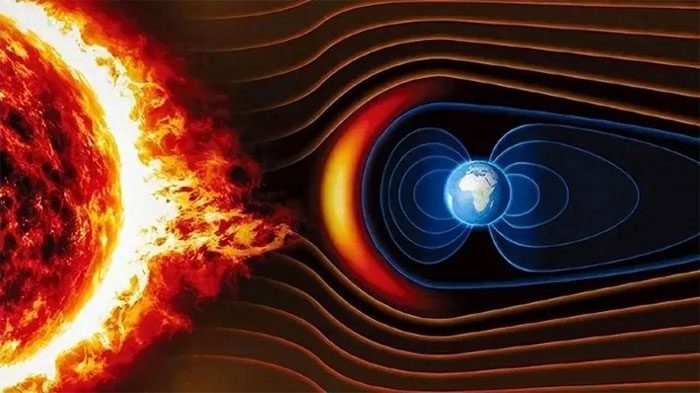
The geomagnetic field of the Earth is the magnetic field inside the Earth’s surface. It is generated in the liquid outer core of the Earth, forming a global magnetic field through hydromagnetic processes and is linked to the Earth’s rotational motion. (Image: Zhihu).
A dense network of magnetometers can measure and record the intensity and direction of the geomagnetic field. These data show that changes in the geomagnetic field are a relatively complex and continuous process.
Under the influence of fluid movement within the Earth, the process of geomagnetic reversal can be roughly divided into three stages:
- The decay of the magnetic field: In this stage, the intensity of the magnetic field gradually weakens, and its direction becomes more chaotic.
- Magnetic pole drift: This is the process where the positions of the Earth’s magnetic poles begin to deviate from their current locations and move in the opposite direction.
- The re-establishment of magnetic poles: This refers to the emergence of a new magnetic field, with the poles eventually reaching positions opposite to their previous locations.
The movement of fluids within the Earth is one of the causes of geomagnetic reversal, but the specific mechanism is still unclear. However, a widely accepted theory is the interaction between the movement of tectonic plates and thermal convection. The tectonic plates are large rock masses that move on the Earth’s crust, and they are thought to be a significant driving force behind the fluid movement within the Earth. As the plates move, they interact with thermal convection currents in the Earth’s mantle, causing fluid movement inside the Earth. This movement disrupts the distribution of electric currents within the Earth, thereby altering the direction of the geomagnetic field.
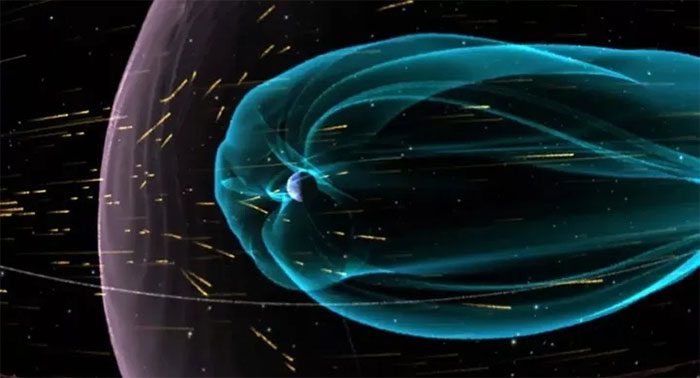
Geomagnetic reversal is the reversal of the direction of the Earth’s magnetic field. This phenomenon occurs periodically throughout Earth’s history, approximately every 500,000 years. Geomagnetic reversal is a significant manifestation of the long-term development of the Earth’s magnetic field and holds great importance for geological and scientific research. (Image: Zhihu).
The rotation of the Earth is also a crucial driving force for the movement of fluids within the Earth. The Coriolis force generated by the Earth’s rotation disrupts the flow in the outer core. This disruption can also lead to changes in the geomagnetic field. Other factors within the Earth, such as thermal convection in the mantle and the rotation of the solid inner core, may also have an impact on changes in the geomagnetic field. Although the movement of fluids within the Earth is one of the main causes of geomagnetic reversal, the reversal mechanism remains a hot topic in the field of Earth science.
Currently, scientists use geophysical methods, aerospace technology, and geological survey data to study the processes and mechanisms of geomagnetic reversal, hoping to gain a better understanding of the physical processes within the Earth and shed more light on the causes of geomagnetic reversal. This will help us understand the changes and evolution of the Earth and is highly significant for the development of Earth science and related applications.
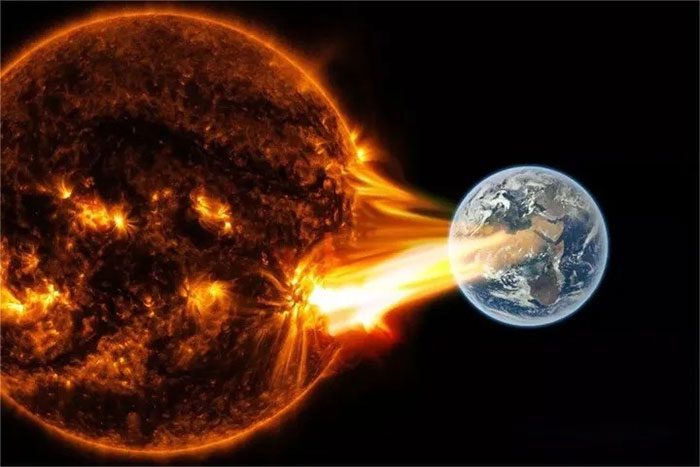
At certain times, the Earth’s magnetic field can completely reverse, with the north and south magnetic poles swapping places. This reversal is a slow process that can last thousands of years. (Image: Zhihu).
Effects of Geomagnetic Reversal
Geomagnetic reversal can have significant consequences for both biological systems and technology on Earth. Many animals and microorganisms rely on the geomagnetic field for navigation. For instance, birds and fish use the geomagnetic field to determine migration routes and habitats, relying on geomagnetic information to orient themselves.
However, geomagnetic reversal can disrupt their navigation systems, causing them to become disoriented and even lost in unfamiliar environments. For some insects and microorganisms that depend on geomagnetic sensors, the effects of geomagnetic reversal can be even more severe, potentially threatening their populations or even causing biological extinction.
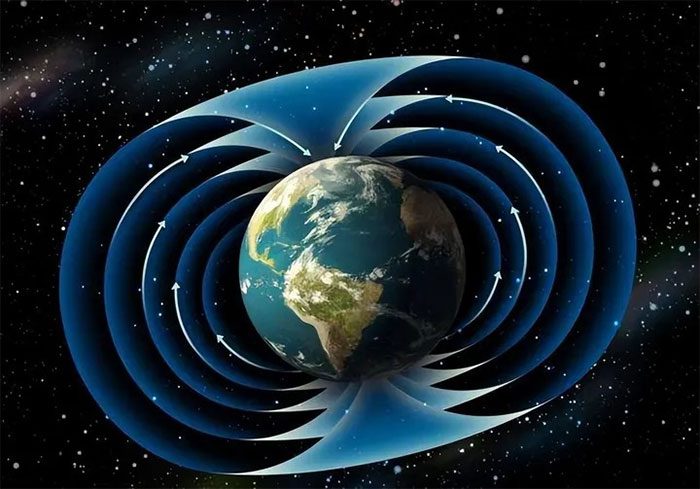
Geomagnetic reversal not only affects the Earth’s magnetic field but also has certain impacts on living organisms. There is a notable correlation between geomagnetic reversal and extinction events of living organisms. Geomagnetic reversal can weaken or even eliminate the Earth’s magnetic field, which facilitates the entry of solar winds and cosmic rays into the Earth. These high-energy particles are harmful to living organisms and can exert greater stress on life forms on Earth, especially those that rely on the geomagnetic field for movement. (Image: Zhihu).
Geomagnetic reversal can also significantly impact navigation systems. Modern maritime and aviation navigation systems, as well as satellite positioning systems like GPS, rely on geomagnetic information to provide accurate positioning and navigation functions. However, geomagnetic reversal can disrupt these systems as they may fail to accurately pinpoint the locations of the north and south magnetic poles.
This could lead to confusion and significant risks for pilots, captains, vehicle operators, and other navigation personnel. Additionally, geomagnetic reversal may impair communication systems and power grid systems, causing severe disruptions to transportation, communication, and energy supply for human society.
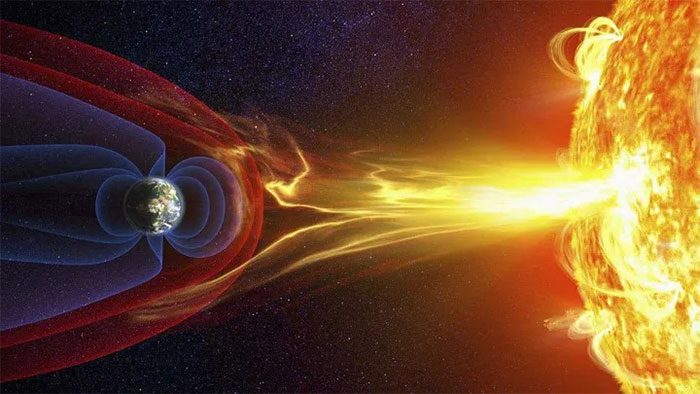
Geomagnetic reversal also has certain effects on geothermal activity and the movement of the Earth’s crust. Changes in the magnetic field can affect heat flow and tectonic movements within the Earth, thereby altering geological activities. Periodic changes in geomagnetic reversal provide an important reference for studying the processes of movement and dynamics within the Earth. (Image: Zhihu).
Although geomagnetic reversal can lead to a range of negative impacts, the positions of the magnetic poles have reversed multiple times on Earth, and both living organisms and human society have adapted and responded to these changes. Scientists have uncovered the frequency and impacts of past geomagnetic reversal events through research on geological sites and fossils. Human society continues to evolve and improve technology to respond to and address the corresponding issues arising from geomagnetic pole reversal.




















































